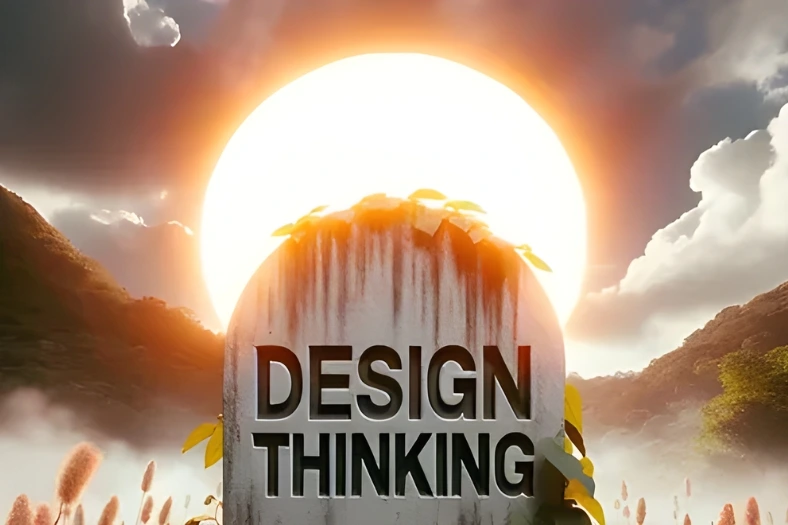In the past decades, the buzzword in innovation has unmistakably been “Design Thinking.” Innovation in healthcare, as in many fields, has been profoundly influenced by the principles of Design Thinking. Rooted in empathy and the human-centered approach, its advocates hail it as the ultimate answer to all complex problems. And while there’s no denying the successes it’s achieved in many domains, a closer look into healthcare paints a somewhat different picture.
Let’s first unpack the grand promise of Design Thinking: Pure Design Thinking champions the idea of empathizing with the user, defining the problem, ideating solutions, creating prototypes, and then testing. Rinse and repeat until you find the solution that resonates. Sounds foolproof, doesn’t it?
Yet, in healthcare, this method has seen its share of high-profile misses.
Take the case of a leading healthcare institution that developed a state-of-the-art patient portal. The Design Thinking process identified the needs beautifully. A sleek prototype was created. But in practice? The adoption was abysmal. It turned out that while they’d captured patient needs, they hadn’t considered the workflow impacts on physicians, leading to a portal that doctors were reluctant to integrate into their practice.
This is where Designomics steps in — a term I’ve coined to represent the merger between design thinking and the pragmatism of behavioral and business economics. In essence, Designomics takes into account not just what customers say they want, but also what they’re actually likely to use and adopt, given the realities of economic behaviors and other systemic constraints. It acknowledges that while design is crucial, it’s equally essential to understand the economic behaviors of users and the business dynamics in play.
Behavioral economics teaches us that there’s often a vast difference between expressed preferences and revealed preferences. People might say they want a feature, but will they pay for it? Will they change their habits to use it? Designomics seeks to answer these questions.
The aforementioned telemedicine platforms are a perfect case in point. The most adopted platforms weren’t necessarily the most feature-rich but were those that integrated design with an understanding of both patient and provider economics. By acknowledging the importance of time, privacy, and the financial aspects for both parties, they crafted a solution more in line with real-world behaviors and economic constraints.
Why Designomics Matters More than Ever
In healthcare, where stakes are sky-high, and adoption can mean the difference between life and death, it’s not enough to design for what users say they want. We must design for what they’ll actually adopt and use in the myriad complexities of their real-world environments.
Designomics doesn’t discard the principles of Design Thinking; it builds upon them. It takes the empathy and human-centeredness of Design Thinking and adds a layer of economic realism, ensuring that solutions are not just well-designed but also well-adopted and economically viable
As healthcare continues to evolve in an era of technological advancements and changing patient behaviors, Designomics offers a way forward. It’s a call for innovators to move beyond design alone and to factor in the nuances of economics, ensuring that our solutions are not only well-designed but also widely adopted and sustainable in the real world. As healthcare innovators, it’s time we evolve from pure Design Thinking to a more robust Designomics approach. Because at the end of the day, the best solutions are the ones that people actually use.
The Designomics Model
Empathize with Economic Realities:
- Traditional Design Thinking: Understand users’ feelings, needs, and pain points.
- Designomics Enhancement: Dive deep into the economic behaviors of users. What are the financial constraints, motivations, or deterrents that influence their decisions?
Define with Business Insight:
- Traditional Design Thinking: Clearly articulate the users’ needs and challenges.
- Designomics Enhancement: Overlay those needs with business objectives and market realities. Consider the business model, revenue streams, and market positioning.
Ideate with Behavioral Economics:
- Traditional Design Thinking: Brainstorm solutions and alternatives.
- Designomics Enhancement: Factor in how human biases and heuristics might influence the reception of these ideas. For example, a solution might be technically sound, but will it be too much of a departure from what users are accustomed to? How can you leverage behavioral nudges to make the solution more appealing?
Prototype with Feasibility Analysis:
- Traditional Design Thinking: Create a tangible or digital prototype to represent the solution.
- Designomics Enhancement: Ensure that this prototype is also vetted for economic viability. Can it be produced, implemented, or marketed within a reasonable budget? Does it have clear potential ROI?
Test & Validate with Market Dynamics:
- Traditional Design Thinking: Obtain user feedback to refine the solution.
- Designomics Enhancement: Test not just for user experience, but also for economic responsiveness. Will users be willing to pay for it? How does it perform in various market conditions? Is there a sustainable business model behind it?
Iterate with Economic Feedback Loops:
- Designomics Addition: Continuous feedback isn’t just about user experience but also about the economic impact of the solution. As market conditions, user behaviors, and business models evolve, iterate on the solution to keep it both user-centric and economically viable.
This Designomics model ensures that innovations are not just user-friendly but also sustainable and scalable in real-world economic conditions. By combining the human-centricity of Design Thinking with the grounded realities of behavioral and business economics, Designomics promises more robust, resilient, and relevant solutions, especially in complex fields like healthcare.



0 Comments